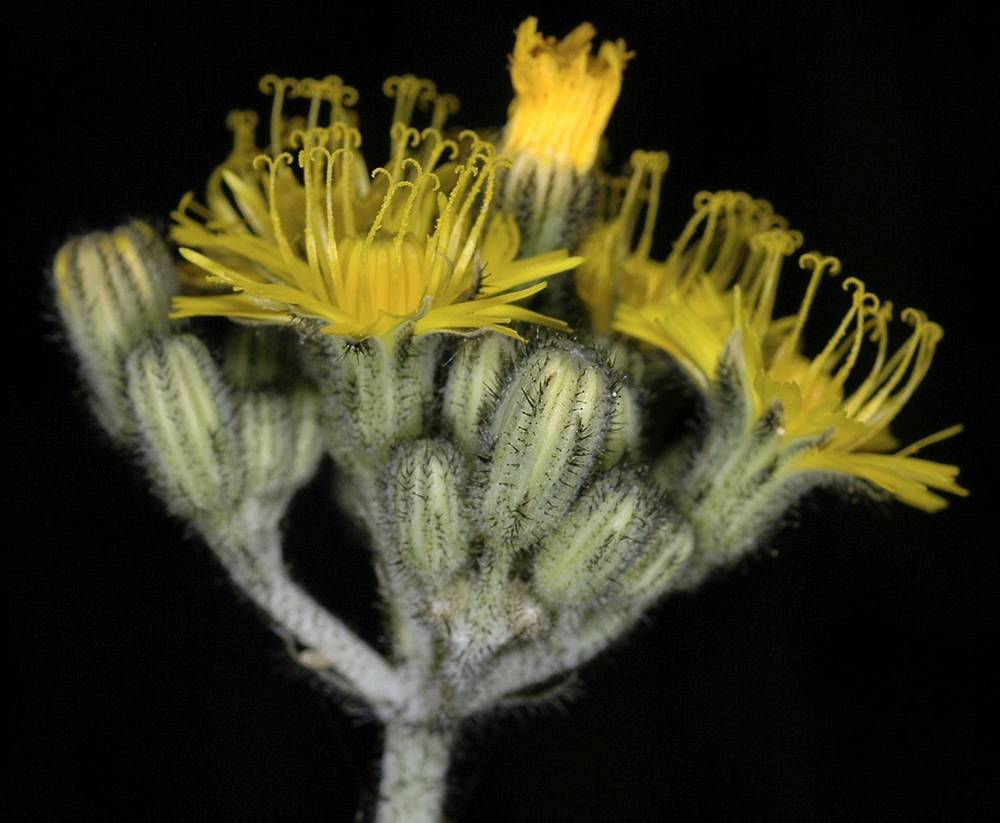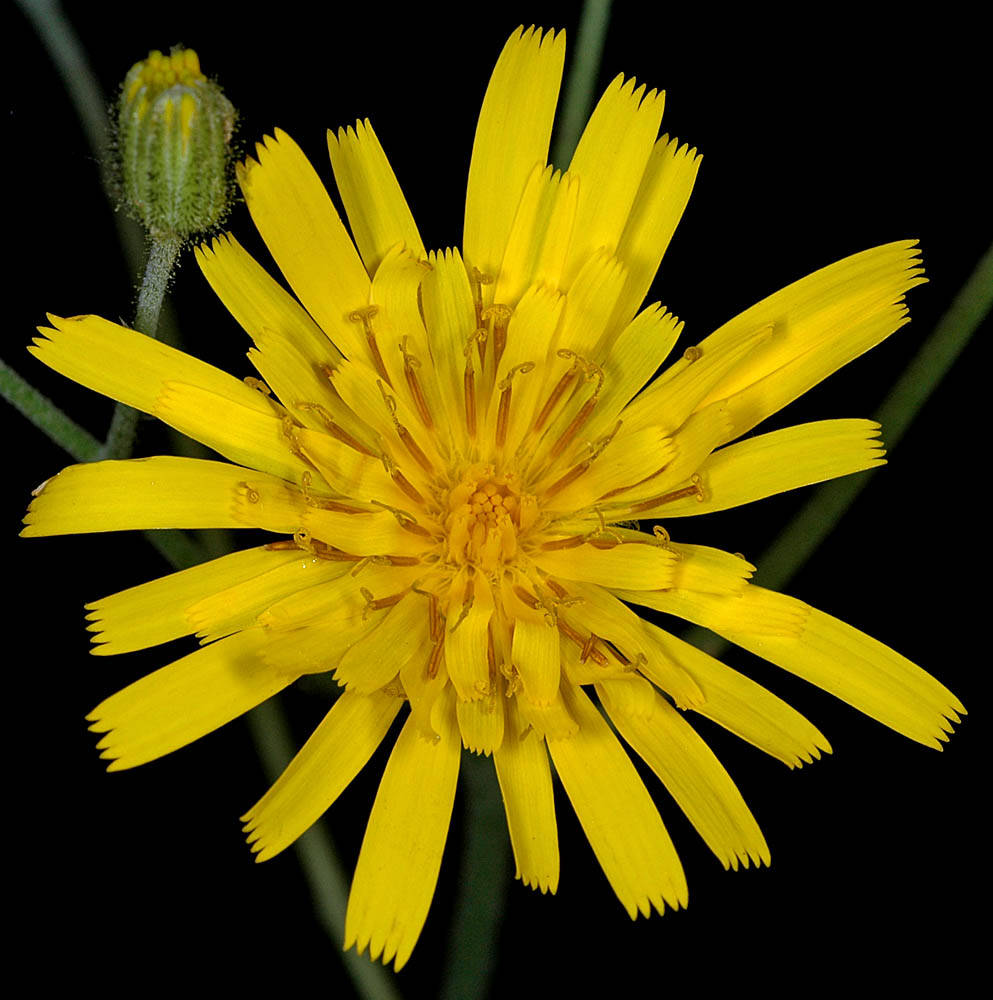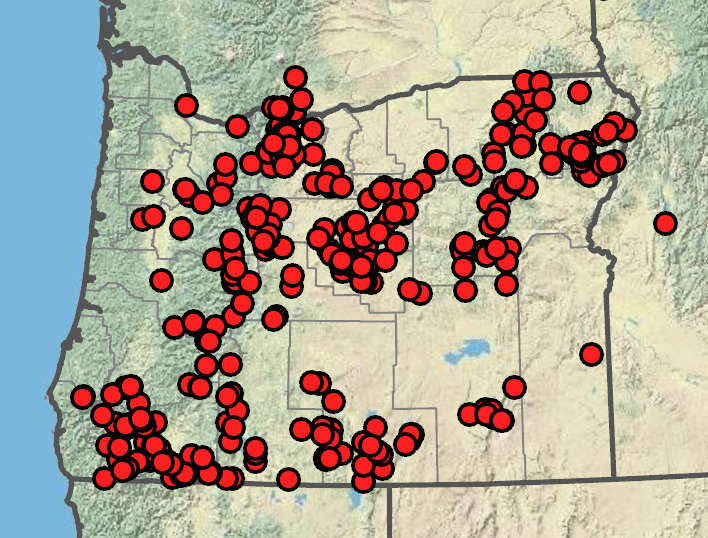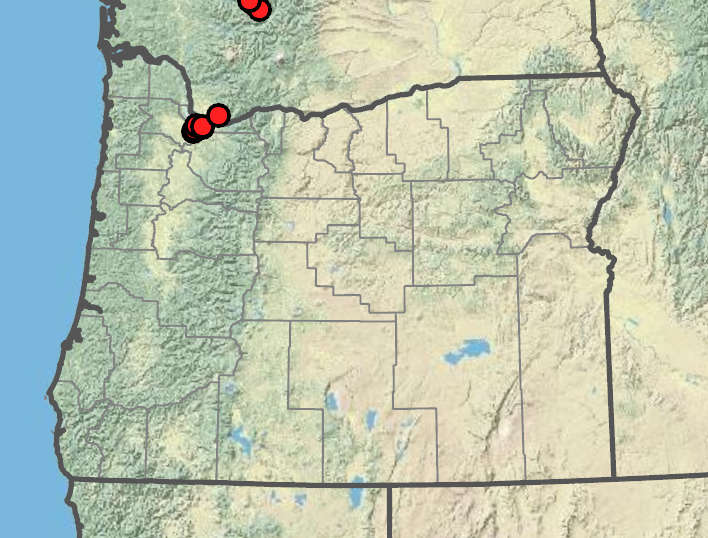Hieracium scouleri
Hieracium murorum
Scouler's hawkweed, woolly weed
wall hawkweed
simple or branched;
surfaces glabrous to tomentulose, puberulent, or pilose-setose, sometimes glandular-setose distally.
simple or branched, setose-pilose proximally, becoming tomentulose and hispid-glandular distally.
basal or basal and cauline, narrowly or broadly oblanceolate or elliptic, 2.5–30 cm, bases attenuate;
margins entire, rarely denticulate;
surfaces pilose-setose and stellate-pubescent, rarely glabrous;
basal petioles often winged;
cauline usually sessile.
basal or basal and cauline; ovate or broadly elliptic, 5–50 cm, bases truncate or cordate;
margins denticulate to dentate; lower usually strongly toothed;
tips acute or obtuse. surfaces abaxially pilose, adaxially glabrous or lightly pilose;
basal petiolate;
cauline sessile.
panicle- or raceme-like arrays, bracteate or not.
panicle-like arrays, bracteate.
campanulate in flower; ovoid in fruit, 5–12 mm.
campanulate in flower; ovoid in fruit, 7–9 mm.
15–45+;
ligules 8–20 mm, yellow.
30–50+;
ligules 15–20 mm, yellow.
linear-lanceolate;
surfaces pilose-setose with black hairs; inner 12–20+; outer gradually shorter.
linear-lanceolate;
surfaces densely stipitate-glandular, sometimes tomentulose; inner 8–16; outer gradually shorter.
columnar, 2.5–3 mm, dark brown.
columnar, 2.5–3 mm, dark brown.
=18.
=27.
Hieracium scouleri
Hieracium murorum
Forests, shrublands, grasslands, rocky ridges and slopes, roadsides. Flowering Jun–Sep. 0–2600 m. BR, BW, Casc, Col, ECas, Owy, Sisk, WV. CA, ID, NV, WA; north to British Columbia, northeast to Alberta, east to WY. Native.
Hieracium scouleri is here given a broad circumscription to include such segregate taxa as H. albertinum and H. cynoglossoides, which are sometimes also recognized at varietal rank.
Disturbed areas, roadsides. Flowering Jun–Aug. 50–200 m. WV. AK, British Columbia, northeastern US and adjacent Canada; Europe. Exotic.
The common name refers to the translation of the Latin murorum, meaning “of walls.”
Kenton Chambers
Kenton Chambers
- Local floras:
BC,
CA,
OR,
WA
- Local Web sites:
CalFlora,
CalPhotos,
Flora NW,
PNW Herbaria,
Turner Photog.
WildflowerSearch
iNaturalist (observations)
USDA Plants Database
- LBJ Wildflower Center
- SEINet
- Plants of the World Online
- Encyclopedia of Life
- Wikipedia
- Google Image Search
- Local floras:
BC,
OR,
WA
- Local Web sites:
Flora NW,
PNW Herbaria
WildflowerSearch
iNaturalist (observations)
USDA Plants Database
- LBJ Wildflower Center
- SEINet
- Plants of the World Online
- Encyclopedia of Life
- Wikipedia
- Google Image Search





